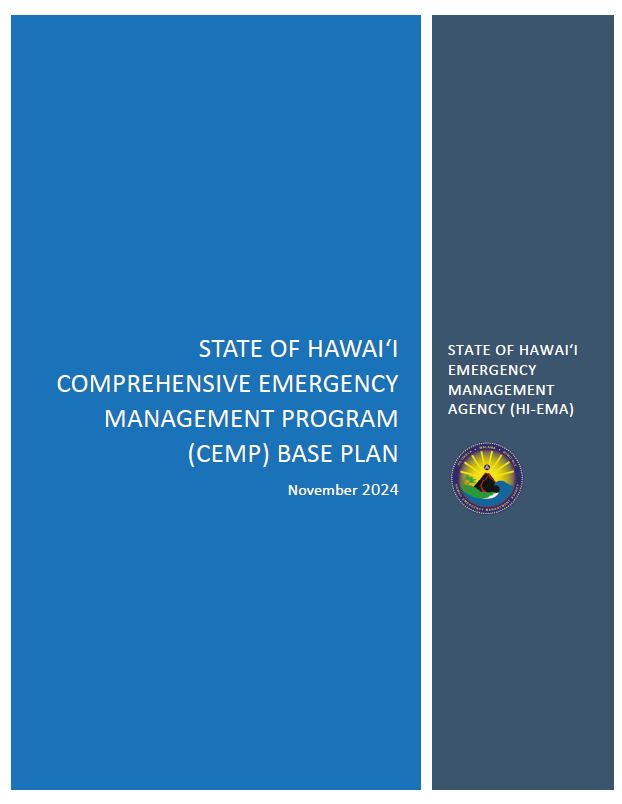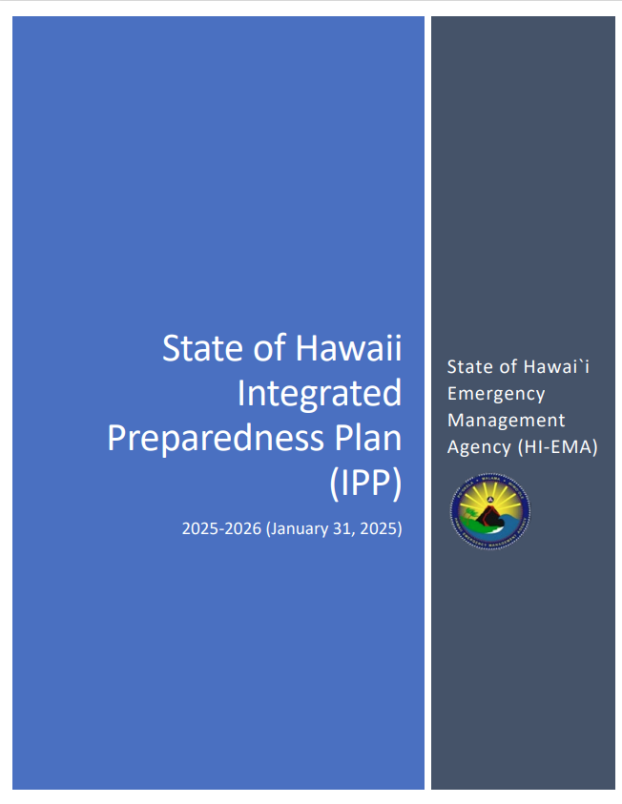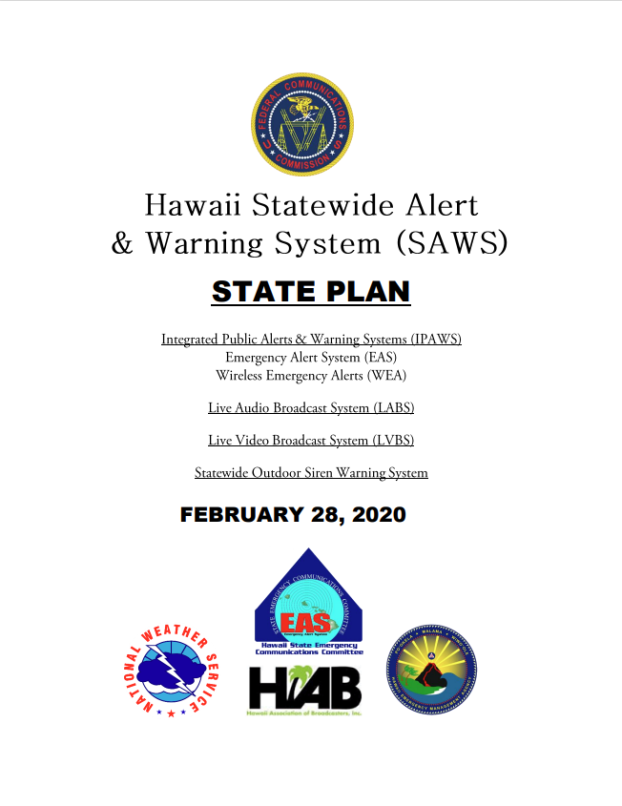Plans

Five Year Strategic Plan 2020-2025
This plan outlines HIEMA’s three strategic goals for 2020-2025: Enable a statewide framework where stakeholders are prepared and ready; Support stakeholders in emergency preparation, mitigation, response and recovery; Deliver quality emergency management services to the state.

State of Hawaiʻi Hazard Mitigation Plan
This plan identifies the major natural hazards that affect our state, assesses the risk that each hazard poses, analyzes the vulnerability of our people, property and infrastructure to the specific hazard, and recommends actions that can be taken to reduce the risk and vulnerability to the hazard.




